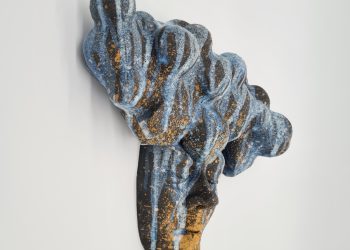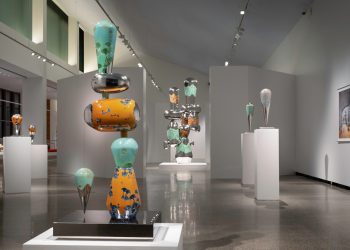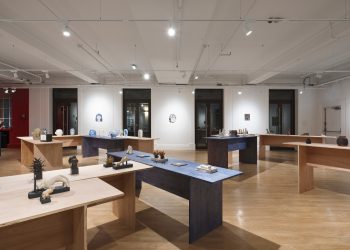Born in 1987, in Montreuil, France, King Houndekpinkou is a French-Beninese ceramicist who works and lives in Paris.
In his childhood, King developed a fascination for Japanese video games. Yet, over the years, his interest for Japan went deeper into the culture and the traditions of the country itself. His love for the Land of the Rising Sun grew with him throughout 2012, the year he discovered the richness and the diversity of the Japanese pottery. He learns about tea bowls from the Momoyama Era (XVI-XVII centuries), Shino pottery and the ancestral creations from Shigaraki and Bizen. Mesmerised by the work of clay and the transformation of materials by fire, he decides to take pottery classes with Japanese ceramist Kayoko Hayasaki at the Paris-based Mire studio.
At the first touch of the clay “dormant emotions came alive”. Then aged 24, King believes he has finally found his mean of expression. This experience encourages him to “dig deeper” into his feelings to grasp and give shape to this “emotional matter that long remained inert”. He then takes night classes with ceramic artist Grégoire Scalabre at the School of Arts and Ceramic Techniques in Paris (ATC) to improve his wheel throwing skills. Very soon, King develops a sensual and expressive style.
A year later, King meets with the Japanese potters of the Keramos group from Bizen, Japan. He assists them during an artist-in-residence project in Chéniers, central France. As they befriend, King visits them in Japan every year to improve his knowledge of Bizen-yaki (the Japanese name for the pottery of Bizen). This ancestral craft seduces him because of it is rough, imperfect, and features natural wood ash decorations. As he gains further experience in Japan, King senses a mysticism emerging from the work of Bizen potters. This spirituality seems to resonate with the animist culture of his roots of Benin, a country known to be the cradle of Voodoo.
For him, these two sciences share something unique: the search for a transcendental relationship between man, nature and the four elements; earth, water, aire and fire. He then becomes aware of the spiritual connections uniting Benin and Japan.
Taking inspiration into the respective works of Swiss psychiatrist Carl Gustav Jung and French philosopher Gaston Bachelard on the collective unconscious and the imagination of matter, King gradually develops his own vision of ceramics: “Through the skin, clay seeps into the body of the creator to awaken and seize the emotional matter that inhabits him/her. Then, in harmony with water, air, fire and time, it translates these emotions into a universal plastic language: ceramics”. This revelation pushes King to set another course for his life, leaving behind a six-year professional career in the field of Communications.
Today, King’s story is reflected in contemporary creations, which combine craftsmanship, cultural syncretism, spirituality and experimental approach. His creative process encourages a close and direct relationship with the clay that he purposely scratches, tears and repairs. The potter’s wheel remains his main tool that he tries to diverts from its main use to further explore the relationship between the body and the clay in motion (e.g. inner wall of his sculptures are often worked with the foot). After firing, his glazing technique reveals cracks, grainy and flowing textures that are both inspired from altars of the Voodoo tradition in Benin, and traditional Japanese glazes such as Shino, Tenmoku or Oribe. This blend of cultural influences results in meditative and lively creations that encourage us to accept the diversity of the world and the beauty of our own imperfections.
King is represented by Galerie Vallois, in Paris. He is a member of French federation of craft professionals Ateliers d’Art de France.
Visit King Houndekpinkou’s website and Instagram profile.
Featured work
Gravity, 2020
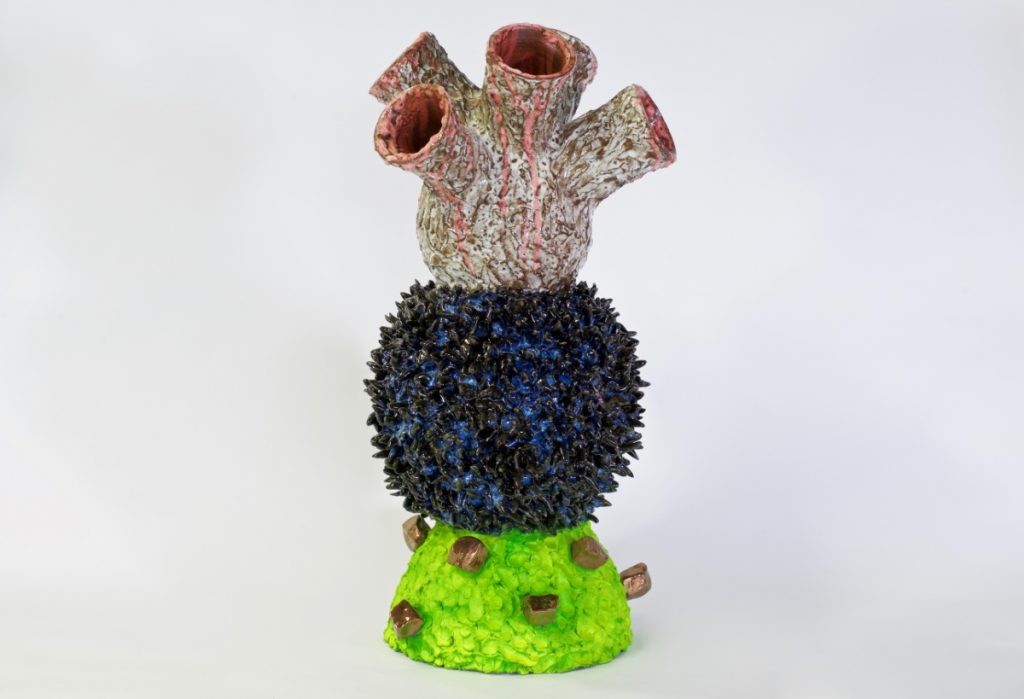
Twin Soils: bridging Africa and Asia with clay, 2019
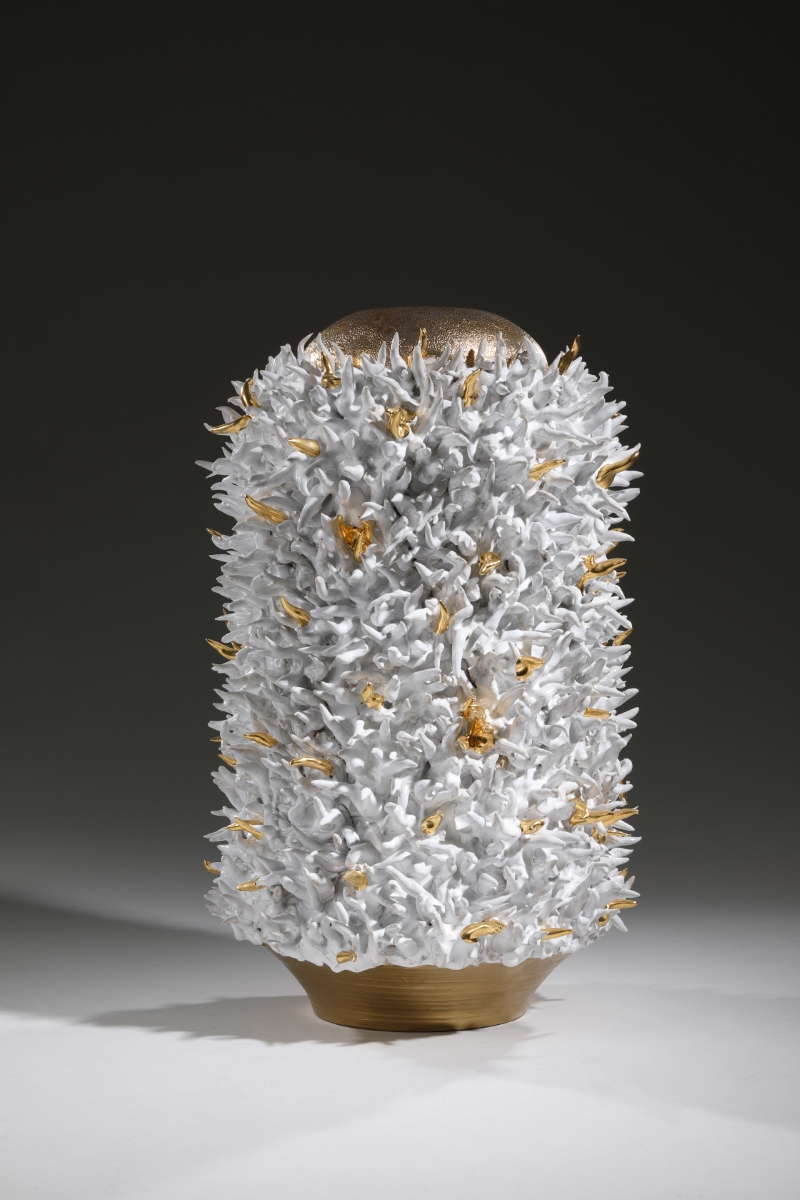
In order to extract the clay from its dark cavities and lead it up to the light, one must dig earth first. Therefore, it teaches us to dig within so we can discover ourselves.
Clay is universal and tolerant. It ignores our skin color, our social class, and our religion. But it knows that we are all but ephemeral beings and that our footprints in the clay are only traces of our short time on Earth.
Combined with water, clay becomes moist and flexible. Through the skin, it seeps into the body of the creator to awaken and seize the emotional matter that inhabits him/her. Then, in harmony with water, air, fire and time, it translates these emotions in a universal plastic language: ceramics. Fusing the soul with matter is what drives me creatively.
It fascinates me to see how earth, water, air and fire can be merged together and translate emotions into a handmade piece. It’s magic.
Through the hands, the ceramicist infuses his/her whole essence into the clay to create a piece that, to some extent, mirrors the colors and shapes of an inner world.
I see the firing process as a trial by fire that is orchestrated by chanting and dancing divinities.
These “divine judges”, neither friends nor enemies are the last performers of a transformation by fire and leave their marks on the ceramicist’s creation.
When I work, I let go and try not to think. I aim for a state of openness that leaves me vulnerable but also in control, where I can hold a genuine conversation with the materials.
Glazing is a way to paint the impermanence of life. My glazes drip, fall, crack, crawl and move as if they were dancing to the unpredictable melody of life.
I aspire to give birth to pieces that can have a life of their own. Pieces that have a voice to engage you, pieces that need your wildest imagination to be complete, pieces that show the beauty of our imperfections…









